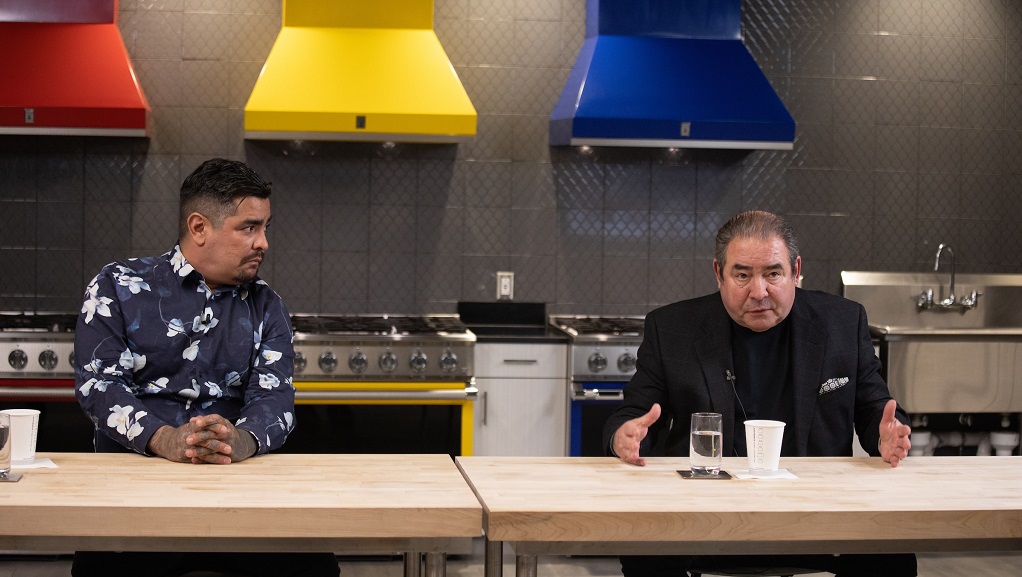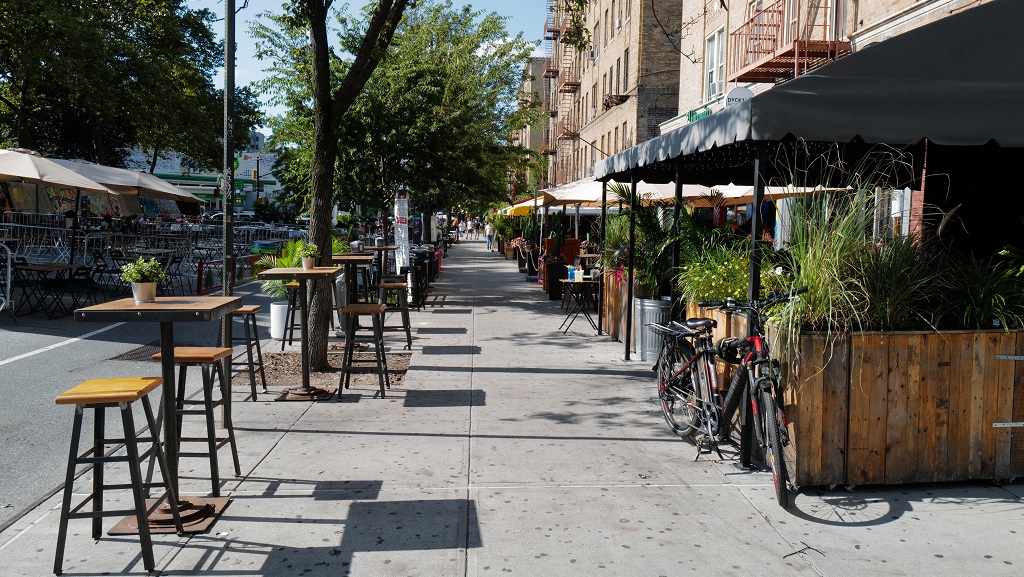Has the Pandemic Changed Restaurants for the Better?
If you made a list of industries impacted by the pandemic, restaurants would be at the top. Many have pivoted — and survived. Associate Professor Brian Warrener, CHE, who teaches food and beverage industry management at JWU's College of Hospitality Management, proposes that the glass is half-full for restaurants and their patrons as we look to the future.
A year ago, I was asked to provide my thoughts on how restaurants were reacting to the very beginning of the coronavirus pandemic and what the near future might hold for operators and the industry. At the time, there was some hope that the shutdown would be short and temporary, with some notable authorities predicting a complete return to normalcy by Easter Sunday, April 12. The benefit of hindsight confirms the absurdity of this timeline. The general economy — and especially hospitality and leisure — did not come close to re-opening quickly. The National Restaurant Association estimates that in the past year restaurants lost $240 billion in sales, 2.5 million jobs and 110,000 eating and drinking establishments either on a temporary or permanent basis.
Without a doubt, this has been a brutal year for our industry. Incredibly, a quick look back reveals that it could have been much worse had it not been for the resiliency of so many talented owners and operators and their creative response to this once-in-a-lifetime challenge. Restaurateurs who weathered the storm still find themselves challenged but cautiously hopeful and optimistic for what the near future holds.
Restaurants are Coming Back
As of April 1, 2021, the government has earmarked $28.6 billion for restaurants in the Restaurant Revitalization Fund. Stimulus checks are frequently being spent at restaurants, part of the reason that the National Restaurant Association has reported double-digit increases in restaurant spending for the last two months. Re-opening and improved sales have resulted in better employment numbers. Unemployment at the beginning of April was at 6%, 1 million new jobs were added in March and 20% of those jobs were in hospitality and leisure. The restaurant industry was always going to come back, the question has been when and in what form.
When will it happen?
I attended a bar and restaurant webinar in the fall that pulled in operators from all over the country, including one from a restaurant in California that hadn’t been opened for months and one from a bar in Alabama hadn’t really closed. Some parts of the country are already opened and mostly have been all along.
For the others, recent positive data seem to provide strong evidence that the answer to when is soon, very soon. Virus hotspots have popped up, likely as the result of the early lifting of restrictions in various communities, an unfortunate temporary result predicted by some public health experts. Many point out that higher levels of vaccination and the coming mild weather could bring an end to the pandemic.
Demand in the hospitality and leisure sector is likely to come gushing back like a fire hose — “kinda.” In some parts of the country, we’ve already seen food and drink establishments, beaches and streets teeming with revelers, eager to spend their money on a good time. These have by and large been younger demographics in more open parts of the country, who have all along been less concerned about the dangers of the pandemic, at least as relates to their own health.

Older Americans, and even many younger ones concerned about making parents and grandparents sick, have been more cautious about returning to activities like indoor drinking and dining that are considered risky. That’s why I equivocated above. I closely followed Barmetrix founder Sean Finter at the beginning of this crisis. He predicted very soon after the pandemic began that everyone would be back, but that they would return at their own pace, based on their own feeling of security. He has been right about a lot over the past year, including that! Young restaurant patrons are mostly back. Older patrons will probably be eating on the patio for a little bit longer. Even these customers should be back this summer and help return things to normal — “kinda.”
All that said, we are likely in for a period where supply does not meet demand, including in-restaurant capacity, but especially in the quantity of staff needed to serve all of this soon to be realized demand. During the pandemic, a lot of restaurant staff have found alternatives to make a day’s pay. Some may be making more than they made in restaurants and bars. Others might like their new job better. This past fall, Dean Sheri Young and I conducted a webinar aimed at food and beverage staff looking to leave the industry, which was sponsored by a food and beverage professional association that had a lot of members that couldn’t take the uncertainty of the industry and felt compelled to leave it! Locating and onboarding staff is going to be a real challenge at least for the remainder of the year.
How have things changed?
Like I said, it’s been a really tough slog for many operators, some of whom haven’t made it through. Those who have made it through have done so by employing a variety of tactics that most consumers had never seen or had only seen in certain kinds of restaurants. Many of these new ways of doing business are likely here to stay, some because they provide the operator greater flexibility and some because customers have grown to really like the changes. Some of these changes were coming to restaurants and bars pre-pandemic. The pandemic simply functioned as an accelerant, speeding things along much quicker.

An increase in outdoor dining spaces may be a direct way restaurants change going forward.
New Consumer Preferences
Technomic has done some excellent work in this area and provides owners and operators with some clues. They polled consumers about which pandemic-driven changes they liked best and hoped became permanent. Respondents indicated that they most liked the new open environments for dining, perhaps demonstrating a preference for eating outside because of health concerns or simply because it’s pleasant to eat outside. The next most popular change concerned the simplification of menus, which diners found to be less intimidating easier to navigate. Lastly, diners hoped that the ability to order and pay remotely remained an option moving forward.
Restaurant Omnichannels
Omnichannels have typically been associated with retail and refer to the ability to move goods and services using a variety of distribution methods. This is one of those trends that was developing post-pandemic and is now fully formed. An omnichannel for restaurants refers to all of the ways that a customer can acquire food and beverage. For many brick-and-mortar restaurants that traditionally consisted of dine-in and take-out. (Some restaurants were so concerned about the quality of their food degrading while it traveled that they eschewed take-out). In the recent past, third-party delivery services like Grubhub and Uber Eats added additional types of acquisition for consumers.
The pandemic certainly served to pour gasoline on this proverbial fire. Restaurants relying on dine-in for the bulk of their sales found themselves without the ability to sell anything in this manner. Restaurants that preferred that their customers not take their food to go had no other options and embraced the practice, changing packaging and menu offerings to suit these sales. Many operations went even further and offered their customers touchless and curbside pickup.
Similarly, many restaurants tried to avoid third-party delivery because of the exorbitant fees charged to deliver food that carried low-profit margins to begin with. At least at the outset of the pandemic, many restaurants again found they had no choice but to accept this channel. Some got savvy and offered in-house delivery driven by menus littered with specials and discounts not available on the third-party delivery menus.
Lastly, some bars and restaurants had success offering cocktails to go, cocktail kits to go and food kits similar to delivery services like Blue Apron and Freshly. Others went so far as to place key items for which they were well known into stores and onto delivery services like Goldbelly.
Imagine a fine dining restaurant pre-pandemic that serves nearly all of its meals in its brick-and-mortar dining room. Imagine post-pandemic this restaurant has pivoted to offer contactless take-out, third-party delivery, in-house delivery, cocktails-to-go, meal kits, cocktail kits and off-premise retail sales. Further, imagine that this restaurant has added a user-friendly, sophisticated online ordering and payment system to facilitate. This omnichannel has put this restaurant at a significant competitive advantage moving forward.
The dawn of the "Roaring Twenties"
I’m a little bit sick of attending webinars if we’re being honest, but this one was really great. Adam Teeter is CEO and co-founder of Vine Pair, and he was discussing his thoughts on what the near future held for restaurants. He put all of the consumer data and responses into a big bag, shook it up and dumped it out on the table. A single, overriding conclusion tumbled out. He observed that people felt the pandemic took away some of the things they most prized but most took for granted. He suspected that Americans would show a new affection for spending time with friends and family, socializing, being close and that they would desire to do so in their favorite eating and drinking establishments. He postulated that this shift would lead to “The Roaring Twenties,” a time when Americans would appreciate gathering places more and, as such, show a willingness to spend more time and money in them, creating a new golden age for restaurants and the professionals that operate them.
The pandemic changed restaurants for good — and it actually might be for the better for us all.



